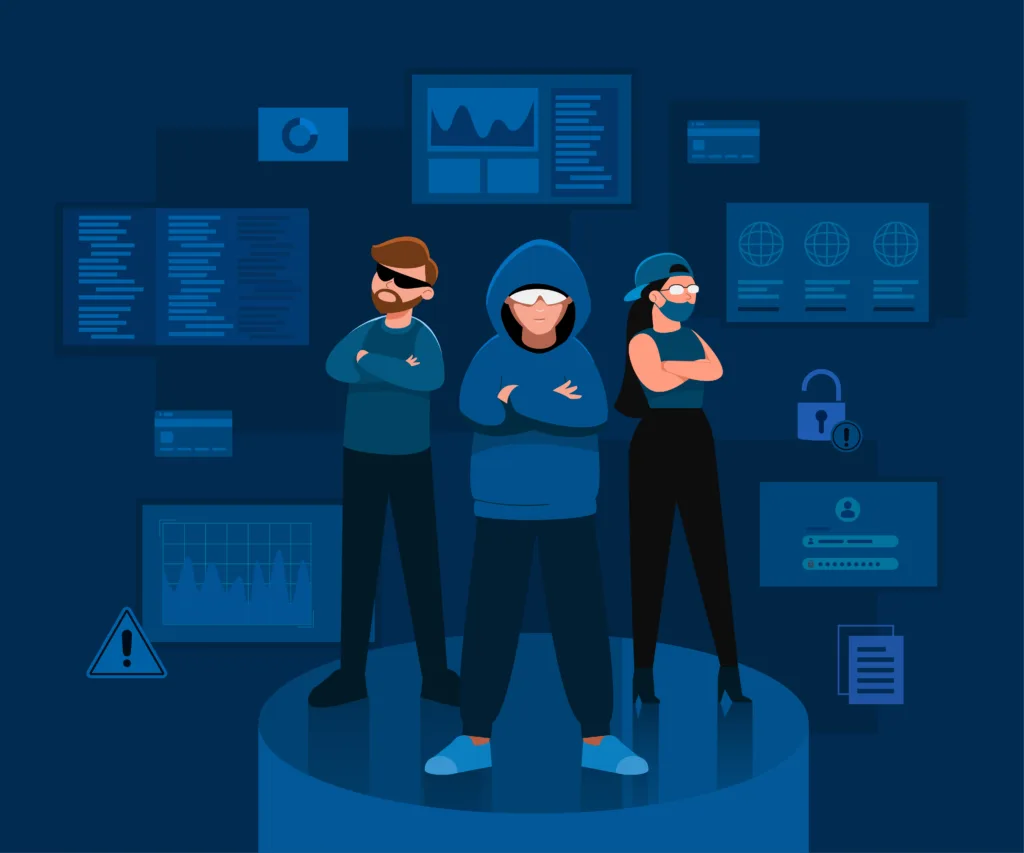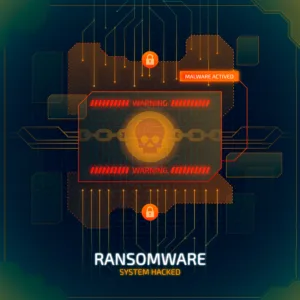
Table of Contents
Introduction – People Problem in Cybersecurity
In the ever-evolving landscape of cybersecurity, where technology continually advances, and firewalls stand as the stalwart defenders of digital fortresses, there remains a critical and often underestimated element: the human factor.
As we navigate the complexities of data breaches, ransomware attacks, and phishing attempts, it becomes increasingly clear that the people problem in cybersecurity is not just a glitch in the system but a profound challenge that demands attention.
In this blog post, lets address the people problem in cybersecurity.
Unveiling the Human Firewall
Imagine your organization’s cybersecurity infrastructure as a castle, fortified with firewalls, antivirus software, and cutting-edge encryption. Yet, within these virtual walls, there exists a dynamic and often unpredictable force – the people.
Whether through inadvertent mistakes, lack of awareness, or targeted social engineering, individuals can inadvertently create vulnerabilities that no technology can fully mitigate.
The Human Element: A Double-Edged Sword
While employees and users are an organization’s greatest asset, they can also be its weakest link. The inadvertent click on a malicious link, the use of weak passwords, or the sharing of sensitive information can open doors that no firewall can close.
Understanding and addressing this people problem is pivotal in building a resilient cybersecurity strategy.
The Psychology of Cybersecurity
1. Awareness vs. Apathy:
Many individuals are aware of cybersecurity threats, yet a significant gap exists between awareness and proactive cybersecurity behavior. Understanding the psychology behind this gap is crucial in bridging it. Are employees apathetic or simply overwhelmed by the vastness of the cyber threat landscape?
2. The Role of Training and Education:
Traditional cybersecurity training often involves lengthy lectures and PowerPoint presentations, which may not effectively engage users. Exploring innovative and interactive approaches to training can enhance understanding and retention, turning employees from potential liabilities into vigilant defenders.
3. Creating a Cybersecurity Culture:
Beyond training sessions, fostering a cybersecurity culture within an organization is paramount. When cybersecurity becomes ingrained in the company’s DNA, employees are more likely to approach their digital activities with a security-first mindset.
Tackling the People Problem Head-On
1. Tailored Training Programs:
Recognizing that one-size-fits-all training is not effective, organizations should tailor their cybersecurity education programs to different roles and levels of technical expertise. From the C-suite to entry-level employees, everyone should receive training that aligns with their responsibilities.
2. Simulated Attacks and Phishing Drills:
Simulated cyber-attacks and phishing drills provide a hands-on experience that goes beyond theoretical knowledge. By exposing employees to realistic scenarios, organizations can evaluate their response capabilities and identify areas for improvement.
3. User-Friendly Security Policies:
Complex and draconian security policies can lead to non-compliance and workarounds. Crafting user-friendly security policies that are easy to understand and implement encourages adherence and reduces the likelihood of human error.
Building Bridges, Not Barriers
1. Human-Centric Technology Design:
Technology should be designed with the end-user in mind. User-friendly interfaces, clear security prompts, and intuitive security features can significantly reduce the likelihood of unintentional security breaches.
2. Encouraging Reporting Culture:
Establishing a culture where employees feel comfortable reporting security incidents, whether they clicked on a suspicious link or received a phishing email, is crucial. Prompt reporting allows for quicker incident response and mitigation.
3. Leadership Buy-In: Leadership sets the tone for the entire organization. When leaders prioritize and actively participate in cybersecurity initiatives, employees are more likely to view it as a collective responsibility rather than an IT department’s concern.
The Road Ahead: Embracing Collaboration
Addressing the people problem in cybersecurity requires a holistic approach that combines technology, psychology, and organizational culture. It’s not about replacing firewalls but augmenting them with a human-centric defense strategy.
1. Collaboration Between IT and HR:
The IT department and Human Resources should work hand-in-hand to align cybersecurity initiatives with employee development and engagement programs. By integrating cybersecurity awareness into the fabric of the organization, it becomes an integral part of the employee experience.
2. Cross-Functional Training:
Cybersecurity is not solely the responsibility of the IT function. Finance, marketing, and other departments all play critical roles. Implementing cross-functional training programs ensures that every corner of the organization is fortified against potential threats.
3. Sharing Threat Intelligence Internally: Just as organizations share threat intelligence externally, establishing channels for sharing insights and experiences internally is equally crucial. Learning from each other’s mistakes and successes strengthens the collective resilience against cyber threats.
Conclusion: The Human Firewall as a Force for Good
As we navigate the intricate landscape of cybersecurity, it’s essential to recognize that the people problem is not a hurdle to overcome but an opportunity to leverage. By investing in the human firewall, organizations can transform their greatest vulnerability into their most potent defense.
Beyond firewalls, antivirus software, and encryption protocols, lies a powerful force – the collective awareness, responsibility, and diligence of individuals within an organization. In embracing this reality, we pave the way for a future where the human element is not just a potential risk but an integral part of a resilient and robust cybersecurity strategy.
It’s time to go beyond firewalls and build a security ecosystem where people are not just the problem but the solution.
Read more on https://cybertechworld.co.in for insightful cybersecurity related content.




















Thanks for sharing. I read many of your blog posts, cool, your blog is very good.